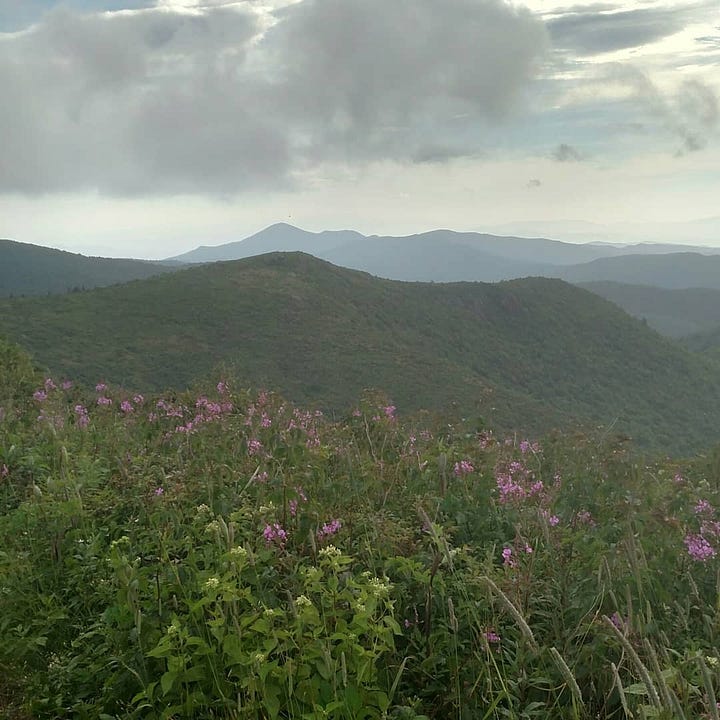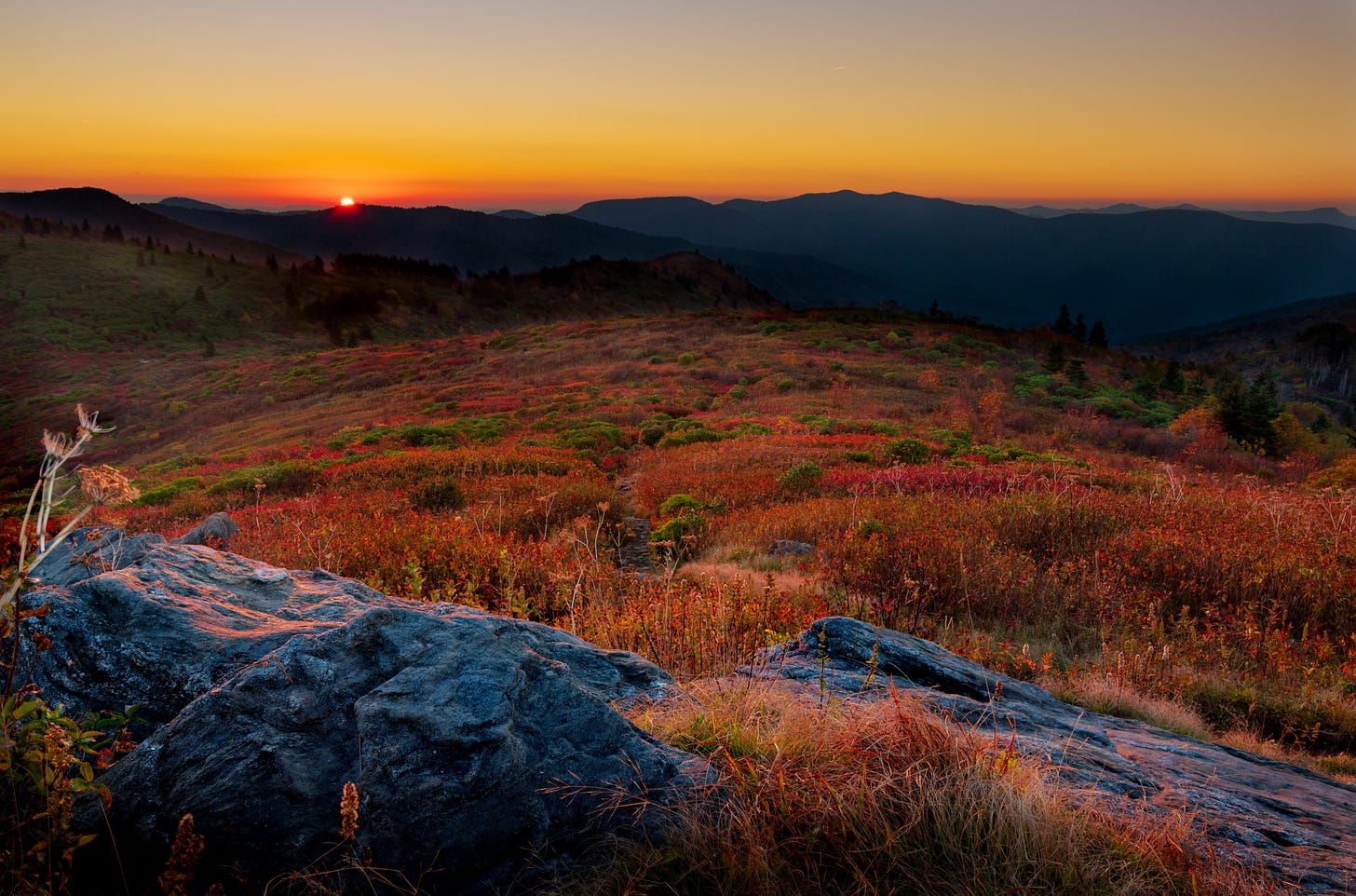The Southern Appalachian Mountains contain a stunning anomaly. Some of the taller peaks are topped with grass covered balds, in a climate in which even the tallest peaks should be covered with dense forest. Instead, almost alpine landscapes lay exposed to the heavens while distant rippled summits sprawl in every direction. It is an extraordinary contrast to the thick canopy of trees that overlays most of the natural areas of the eastern US.
While reading about the balds, almost every description mentions that their existence remains unexplained. The predominant theory is that they are the remains of an ancient ecosystem. When ice age glaciers pushed south the climate here was very different, closer to what exists in the extreme north today. Massive prehistoric grazing fauna may have maintained the balds until those creatures vanished and were replaced by elk and deer. These eventually were succeeded by the grazing domesticated animals of Native Americans and European settlers. This theory is supported by the evidence that many of the balds are now vanishing after the National Forest Service and National Parks banned the grazing of livestock there. I can’t say whether this is good or bad, but points to some naive intervention in a complex ecosystem.
I have visited some of these balds, specifically in the Shining Rock Wilderness area of western North Carolina, since I was a child. The enormity of the sky and extensive vistas fill me with a profound reverence that always calls me back. I brought my kids to these locations when they were young and this feels like one of the most precious gifts I have given them.


Unfortunately, the easy access to information about these areas due to social media has caused an explosion in popularity of some of the more accessible locations. Granted it was at peak leaf season, but when I visited the area in the Fall of 2021 I encountered massive tour groups and even a bride in her wedding gown hiking up for a photo shoot.
On that trip I hiked up on a Sunday, thinking the day trip crowds would leave and I would find some solitude. This did happen for the most part, but I still had several other backpackers as company when I camped on Mt Tennent that night. I arrived early and chose a careful composition for my photo of the sunset over Black Balsam. Then, just minutes before the critical time, another hiker sat on a rock that was the focus of my shot and set up his phone for a time lapse. He realized what he did and tried to move, but didn’t move his phone and tripod. I had to scramble to find a different composition, but the one I captured ended up being a favorite!
The next morning I awoke to some interesting cloud inversion. Here are some links to photos I shared on Instagram-
Philosophical Hatchetwork
I’ve heard people say they do not want to detract from experiencing a moment by worrying about photographing it. I certainly respect the attitude of mindfulness. However, I find that photographing a scene becomes an act of recognition of specific qualities before me such as luminosity, contrast, and color, and how these work together to evoke magic. The more I practice seeing the light, the more it becomes apparent to me everywhere.
Know the path broadly and you will see it in all things. - Miyamoto Musashi
This process is applicable to much more than light and photography. Any art, craft, or skill can develop focus and attention in a way that makes its principles unmistakable throughout the world and life. The key is to study deeply. More on this in a future edition…
Last month I backpacked the Middle Prong Wilderness to try to see the Catawba Rhododendron blooms. It was much too early, but still a good learning experience.
This coming week I plan to return to the Appalachian balds. This trip will push the envelope with a slightly longer duration to the northern section of the Shining Rock Wilderness, an area I don’t have very much experience in. I am hearing this will be prime time for flowers, and I’m excited at the potential. I’ll write about this adventure in a future edition of Field Notes, so stay tuned!







Beautiful pictures! Love your commentary - also I am enjoying your first posts, reading about your camera, etc. Will be fun getting caught up.
This is fascinating and a new way at looking at nature. Keep going, looking forward to more! Love your quotes, too.